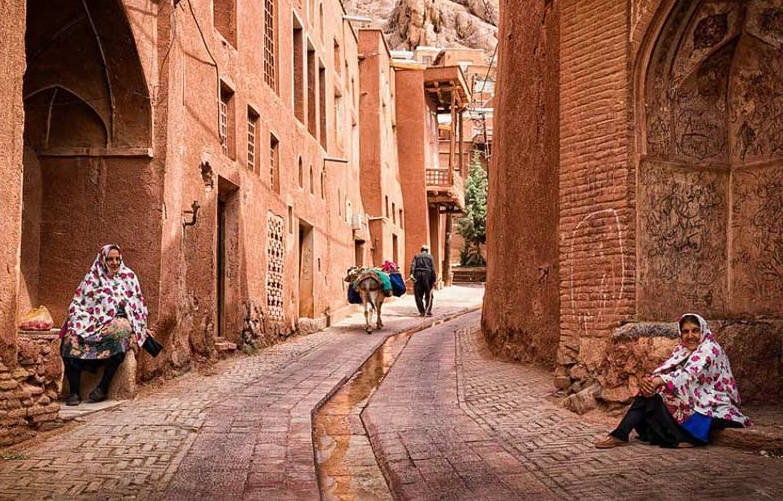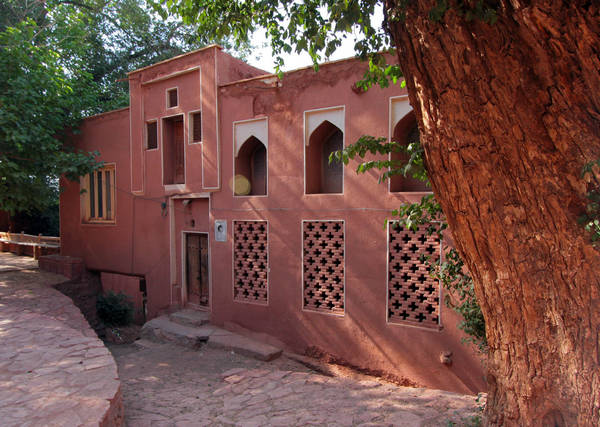Abyaneh Village: What you know about it + video
Abyaneh Village : Nestled in the arid hills of Iran’s Isfahan Province, the village of Abyaneh stands as a striking testament to the nation’s historical depth and cultural resilience. Characterized by its terracotta houses, geriatric population, and time-resistant customs, this ancient village is often referred to as “the red village” due to its distinctive clay constructions. But the charm of Abyaneh is not just in its visuals. Delving deeper, the intricate tapestry of its history, culture, and architecture makes it a notable destination for both local and international tourists.
ABYANEH Traditional Historical Village :
Historical Context
Abyaneh’s roots stretch back to the earliest epochs of Persian civilization. Historical records suggest that the village has been continuously inhabited for over 2,500 years, making it one of Iran’s oldest surviving settlements. Its longevity is attributed to its strategic location: perched on the foothills of the Karkas Mountains, Abyaneh has historically been shielded from the brunt of various invasions and military campaigns.
Throughout the ages, the village witnessed the rise and fall of empires, from the Medes and Achaemenids to the Seljuks and Safavids. This longevity has endowed Abyaneh with a unique perspective on Persian history; it is both a living museum and an active participant in the unfolding narrative of Iran.
Abyaneh Traditional and Red Village :
Abyaneh Village
Architectural Splendor
The architectural style of Abyaneh offers a window into the age-old building techniques and design principles of ancient Persia. A striking feature of its architecture is the use of red mud bricks, which lend the village its distinctive hue. This characteristic coloration is not just a stylistic choice but is also a testament to the village’s adaptation to its environment. The clay, sourced from local deposits, has insulating properties, offering respite from the harsh summer heat and bitter winter cold.

Abyaneh’s houses, constructed in harmony with the sloping topography, are typically multi-leveled, each structure seamlessly built atop another. This terraced building approach ensures that the roofs of one set of houses form the courtyards and pathways for those above. Lattice windows and wooden balconies are other distinctive architectural elements, adding to the village’s aesthetic appeal.
Another noteworthy aspect is the conservation of ancient Zoroastrian architectural features, especially in older structures. This includes the presence of “badgirs” or wind catchers, which function as ancient air conditioning systems, funneling cool air into the buildings.

Cultural and Linguistic Preservation
A journey into Abyaneh is akin to a voyage back in time, especially in terms of cultural and linguistic preservation. While modernity has inevitably made inroads, the villagers have displayed an unwavering commitment to preserving their customs, costumes, and language.
The women of Abyaneh, in particular, are known for their distinctive attire. They often wear colorful floral headscarves and white long skirts, a style that contrasts starkly with the more conservative black chadors prevalent in many other parts of Iran.
Linguistically, Abyaneh offers a fascinating glimpse into the region’s past. The locals converse in an ancient dialect of Persian, known as Middle Persian or Pahlavi, which predates the contemporary Persian spoken across Iran. This linguistic preservation is a striking reminder of Abyaneh’s age and its insulation from external influences.
Religion and Rituals
Religion plays a central role in the lives of Abyaneh’s residents. While Iran is overwhelmingly Shia Muslim, Abyaneh has a rich tapestry of religious history. Traces of Zoroastrianism, the ancient pre-Islamic religion of Persia, are still evident in the village’s customs and festivals. Historical records suggest that after the Arab invasion of Persia and the subsequent spread of Islam, Abyaneh remained a Zoroastrian stronghold for several centuries.
Today, while the village is primarily Shia Muslim, the echoes of its Zoroastrian past are still audible in its rituals, festivals, and even architectural designs. Many of the village’s traditions, from Nowruz (Persian New Year) celebrations to mid-winter Yalda festivities, are reminiscent of pre-Islamic customs, albeit with a distinct Islamic flavor.
Tourism and Economic Impacts
Over the past few decades, Abyaneh has been increasingly recognized on the international tourism map. Its distinctive architecture, ancient history, and cultural richness draw visitors from across the globe. This influx of tourists has, undoubtedly, brought economic benefits to the community, providing job opportunities and revitalizing local businesses.
However, this boon is not without its challenges. The delicate balance between embracing modernity and preserving tradition is continually tested. While tourism infrastructure, such as hotels and restaurants, is essential for accommodating visitors, it raises concerns about potential dilution of the village’s authentic character.
Furthermore, the footfall of tourists can strain the local environment and resources. The challenge, therefore, lies in promoting sustainable tourism that not only respects Abyaneh’s historical and cultural legacy but also ensures its preservation for future generations.
Why is ginseng so beneficial? How does it affect our bodies?
Comprehensive Analysis of Asthma: Causes, Diagnosis, and Treatment Strategies
How to detect stomach cancer early
Signs of a woman having a heart attack or stroke


